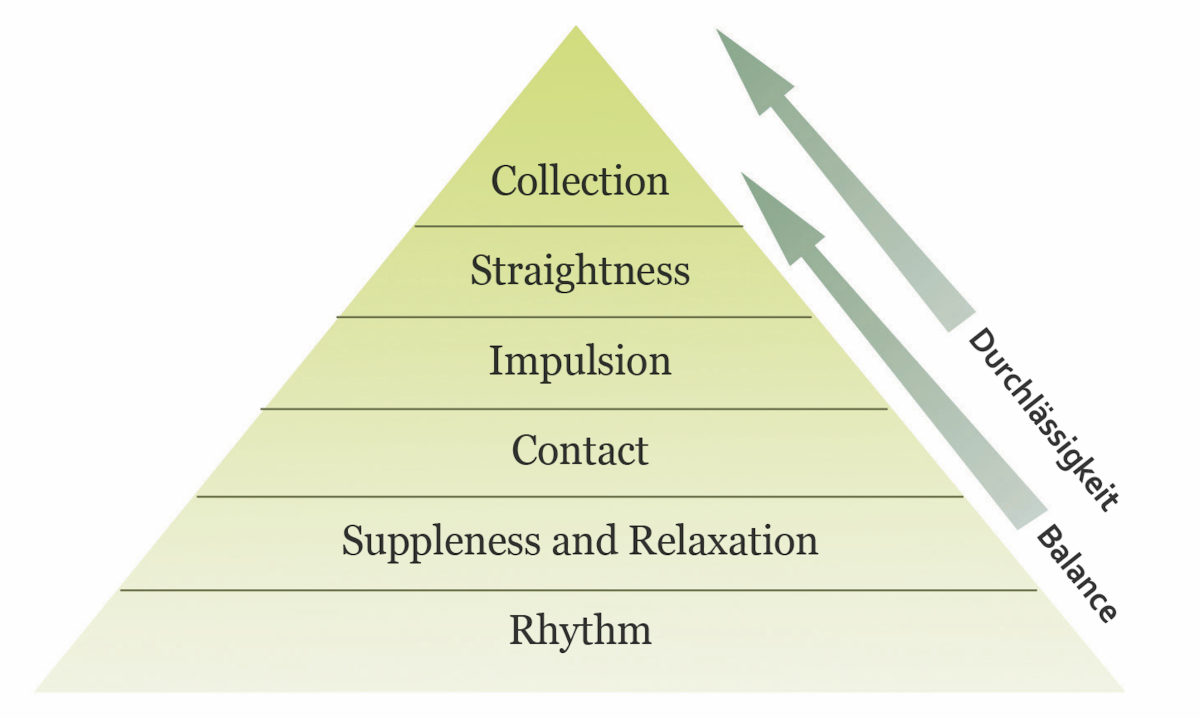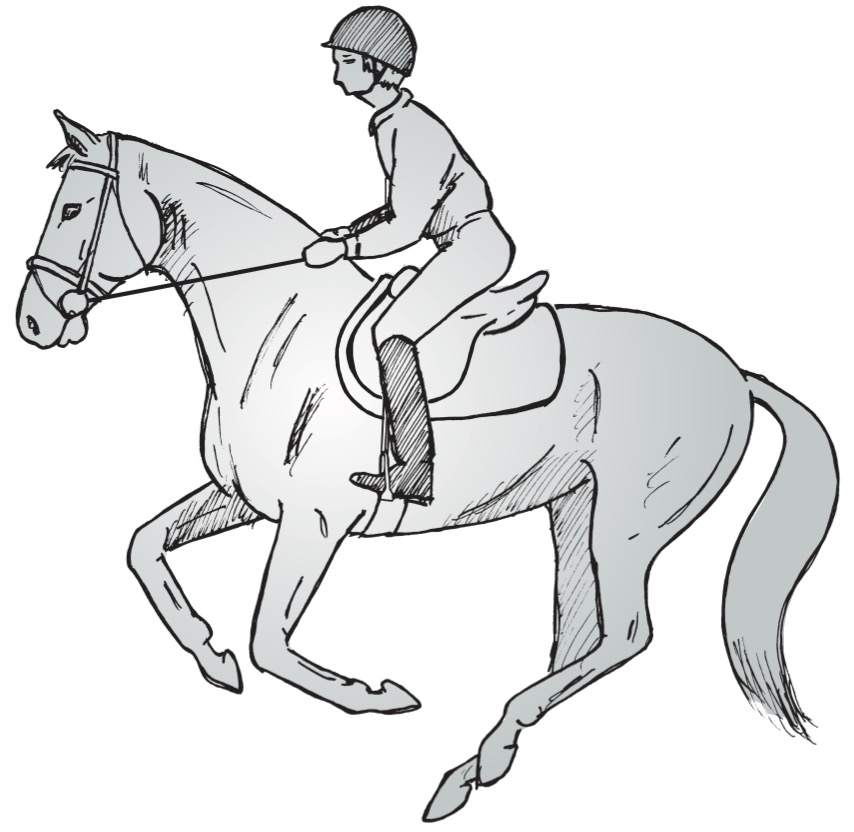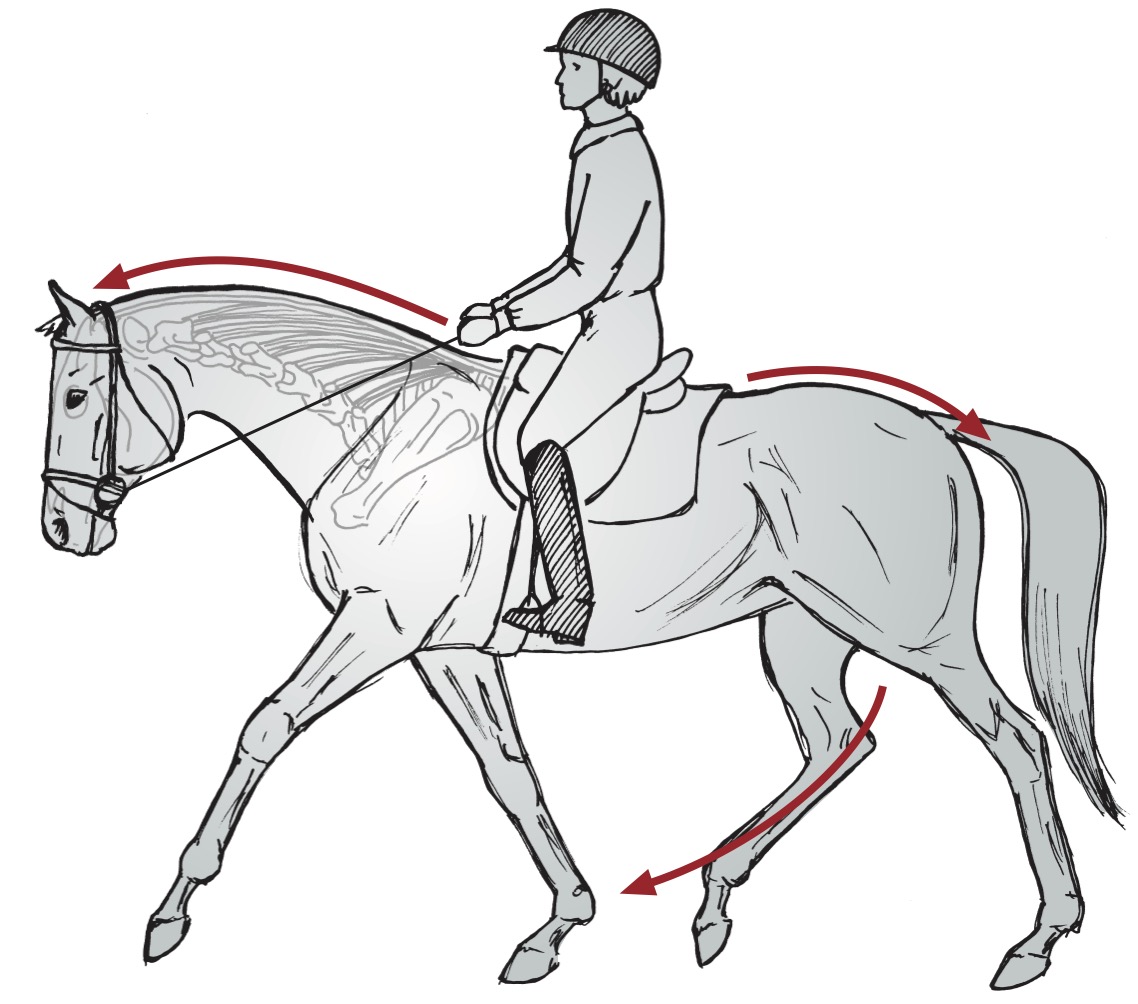
Question: In the autumn, I will have the opportunity to purchase a gorgeous five-year-old ex-racehorse for “next to nothing.” The Thoroughbred is 16.1 hands tall, moves beautifully, and has a sweet, people-oriented disposition. (He was totally unsuitable as a racehorse!) I’ve been well warned that some racehorses never make good riding horses. What do you think my chances are of making this work?
“Transforming” a Thoroughbred that was trained as a racehorse requires an experienced rider who has a supple and balanced seat as well as a lot of patience. It requires a lot of the rider in terms of her self-control. Generally speaking, horses should only be trained by riders who can control themselves and avoid getting emotional or losing their patience and thereby treating the horse unfairly. This applies in a particular way to Thoroughbreds. “Converting” a Thoroughbred racehorse into a dressage horse is, first and foremost, a “character test” for the rider.
This article was adapted from Ride Better with Christoph Hess by Christoph Hess and is available at HorseandRiderBooks.com.
There Is Strength in Serenity
A rider who is appropriate for schooling a horse off the track must remain patient in every situation and avoid setting unrealistic goals and trying to reach them in a short time. Thoroughbred racehorses are bred for speed and competitiveness when running—and they’ve been bred this way for many generations. Their training is focused on this, too. Only very few racehorses will have been trained gymnastically in the sense of The Principles of Riding or in reference to the Training Scale. Most of the time, they’ve been ridden in groups at different tempos, galloped next to one another and behind other horses (and this on different tracks and different topography).
Having said that, the Thoroughbred you describe is still an interesting “project.” Generally, Thoroughbreds are willing to learn and learn quickly. Once a Thoroughbred has learned something, he will never forget it. If you can win over yours so that he’s on your side, he will “go through fire for you.”
Different Aids
Racehorses learn different aids from their riders; likewise, jockeys are not necessarily familiar with how horses are trained according to The Principles of Riding. Racehorses are not trained as a classically educated riding horse would be to work from the hindquarters over the back and neck through the poll to the bit. The walk and trot are not given nearly the same attention they would receive in a horse that is being given a dressage-oriented, gymnastic education. In addition, the rein aids—especially the “taking up of the reins”—means something totally different to an off-track Thoroughbred than it does to a classically trained riding horse. He will understand the taking up of the reins as “Ready for takeoff!” Likewise, he’ll understand a long, loose rein as “Work is over, I can relax now.”
Everyone Tracks the Same Way
In addition, being ridden in a small riding arena, especially indoors, will be new for a racehorse. If there are other riders in the arena who are working in the opposite direction from your horse, which means they come toward you, it can overwhelm your horse, causing a fear reaction. When training at the racetrack, horses are, of course, ridden in groups (in a so-called “string”), but all the horses are going in the same direction.
This means that a former racehorse must be completely “restarted.” This process requires lots of patience, and as a general rule, takes at least one year. The horse must get familiar with the rider’s aids, which he will not know from his prior work under saddle with a jockey. Especially important, he must learn to move in a completely different way—using different body parts, muscle groups, for instance—than he had to on the racetrack. Therefore, the rider must know that it will be a long-term training process that “transforms” her racehorse into a “through,” cooperative, obedient, and well-trained riding horse.


Driving the Horse to Downward Transitions
When retraining an ex-racehorse, the application of the driving aids is the biggest challenge a rider will face. Racehorses do learn to accept the leg aids of the rider (in this case, the jockey) and the horse should be familiar with being ridden on a long rein within the course of his daily training at the track; however, the rider who is reschooling this horse must work on two basic concepts that the racehorse will not have learned in his “first life.”
You must keep in mind that you are surely putting more weight in the saddle than the jockeys or exercise riders at the track ever did. Therefore, you need to think of yourself as a “guest” on the back of the horse. You need to first take the seat on your new partner that one would use when training a green horse; so, the upper body is positioned slightly forward in order to take some of the weight off the seat bones and distribute it more over the knees and stirrups. This makes it more comfortable for the horse to carry a rider and increases the horse’s sense of well-being under saddle.
The second aspect that needs to be considered here is as follows: The horse must learn that downward transitions do not originate from the reins, but rather from the rider swinging with his movement and applying the driving (“breathing” not gripping) leg aids toward the bit. Therefore, you must help the racehorse to trust the sideways-driving leg aids early in the retraining process, as this leg aid will have a calming effect on the horse and provide him with trust and security.
Stretch to the Hand
Even though racehorses don’t tend to be spooky and more often have nerves of steel because of all the environmental influences they’ve experienced at the racetrack, you still must strive to help your horse to feel a sense of well-being in all new situations. This, in turn, reduces the flight instinct. The horse must learn to enjoy being able to move under you at a quiet walk, trot, and canter. In addition to improving the horse’s suppleness, dressage-oriented work, which is a systematic process of gymnasticizing the horse, must also improve the horse’s motivation. In this way, the former racehorse begins to move with elasticity and good expression over his back in the dressage arena.
Swinging over the back will only become possible when the horse stretches toward the rider’s hands—thereby stretching the neck muscles and “opening” through the throatlatch (meaning the place where the head meets the neck). This is going to be a long process for a horse that has not been schooled in this direction from day one of his training. In a way, he must be retrained. Therefore, it will be a while before this horse feels a sense of well-being under saddle.
Accept the Leg
The Thoroughbred must learn to accept his rider’s driving aids, without reacting too strongly to the leg. Many riders make the mistake of trying to ride hot horses using as little leg as possible. It’s a grave error. The exact opposite is crucial as it is only through the acceptance of the leg that the horse can transition downward, which applies especially to Thoroughbreds.
I’ve frequently encountered Thoroughbreds who “flee” from the rider’s leg on the one hand, then ignore the leg or refuse to accept it at all on the other. In these cases, it’s important for the rider to apply her leg aids in a way that is consistent, but “with feel” and measured, so that the former racehorse comes to accept both the sideways and forward driving aids. Through this, he must also learn to transition downward through the application of the leg aids (which sounds paradoxical at first), without the rider having to use her rein aids in any special way as this takes place.
When retraining a racehorse, you need to consistently take into account the classical principle: “Ride the horse from back to front.” You may only apply your rein aids in a “wait and see” manner and must always have the feeling that you are simply “listening in closely” to the horse’s mouth with your hands. It’s only from this basis that you’ll be able to ride your racehorse and this, above all, when you have the feeling of holding two steady rods in your hands instead of two reins. The consistent connection to the horse’s mouth has a vital importance with hotter horses. In any case, it will take some time before the racehorse understands a “taking up of the reins” and the effects of this, and does not associate this with an unsteady contact.

Therefore, in addition to accepting your driving aids, the horse must become accustomed to you “listening in closely” to his mouth with your hands. This is the second key skill you must possess in order to be able to ride a former racehorse with a quiet and happy mouth. Many racehorses tend toward an unquiet mouth or put their tongues over the bit or play with it.
Training with Lots of Variety
The more intelligent a horse is, the more variety his training needs to include. Monotony in training makes horses dull, and often also causes them to shut down mentally. They lose expression and suppleness in their movement.
Therefore, it’s important you not only work with these horses in the dressage arena or indoors, but also always ride outdoors and hack out as part of the requirements of a complete basic training. I also would like to recommend groundwork to build trust, riding over cavalletti and gymnastic jumps as well as including cones and varied arena equipment.
Last Word
Retraining a racehorse to a riding horse—regardless of level or discipline—is a special challenge for every rider. It’s a test of patience—a test that must be passed in every training session. This, however, can greatly benefit the rider. If she’s training other horses, she’ll practice patience with her Thoroughbred that will also improve her work with other horses. Patience is a virtue of the highest priority when training horses.
If you do buy this Thoroughbred, I offer this advice: Don’t get discouraged. One day, you’ll meet a dead end, but the next, you’ll realize that your hard work is paying off.
There are many positive examples of riders who have been very fortunate with Thoroughbreds. Sometimes Thoroughbreds are actually less complicated than hotter Warmbloods or Warmblood crosses.
This excerpt from Ride Better with Christoph Hess by Christoph Hess is reprinted with permission from Trafalgar Square Books.











